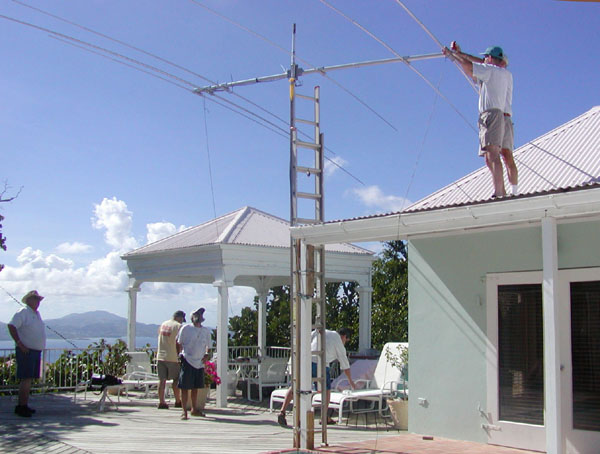
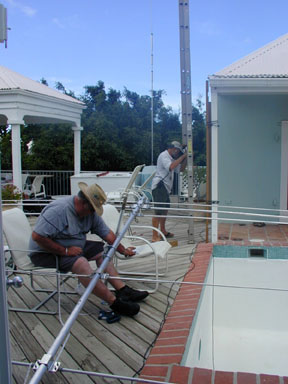 And now the fun begins!
And now the fun begins!
The first, foremost, and most intricate to assemble - the FORCE 12 C3S beam! It was mounted on an extension ladder, which was strapped to one of the portico columns and then raised to about 25' above ground.
It was worth it's weight in gold - and sweat - and performed wonderfully on 10, 12, 15, 17 and 20 meters.
|
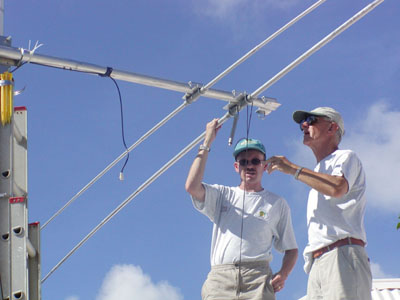 Above - Ted W4ZE assembles the FORCE 12 beam while Paul NP2JF prepares the ladder.
Above - Ted W4ZE assembles the FORCE 12 beam while Paul NP2JF prepares the ladder.
Right: Steve W3SRL and Larry K3VX make final connections before the ladder was extended to the 25' height.
|
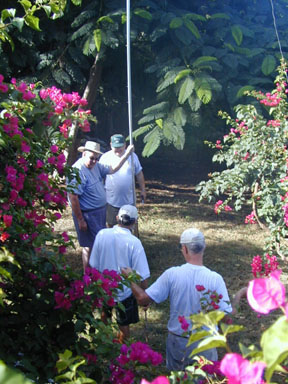 The 40 and 80 meter vertical was erected in the garden, in order to incorporate the 10 radials.
The 40 and 80 meter vertical was erected in the garden, in order to incorporate the 10 radials.
Two dipoles: - a horizontal dipole with an AT180 tuner in its center, operating on all bands - 160, 80, 40 and 30
- a Fritzell dipole which also gave us 160, 80, 40 and 30.
These may not show up in our set up pictures, but they operated throughout the week.
|
 A SUPER beam, broadcasting on 10 and 15 meters was erected at the end of the porch.
A SUPER beam, broadcasting on 10 and 15 meters was erected at the end of the porch.
And, mounted at the other end of the porch (and never pictured) was a trap vertical operating on 40, 20, 15 and 10 meters.
|
. This is the view from our deck, that's St. Thomas you see in the background.
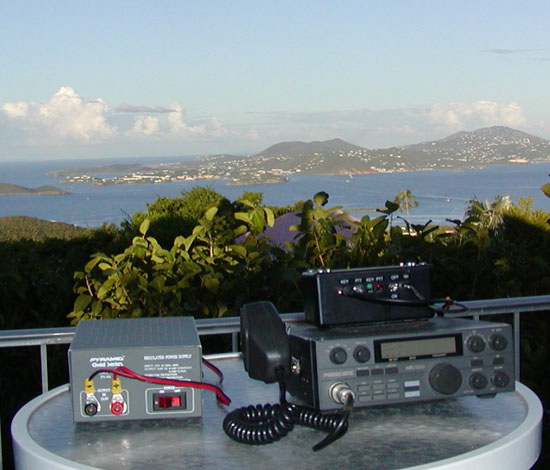
This is the beacon that Steve W3SRL built for the St. John Amateur Radio Club.
It was not operating during our stay, but was on the air very soon after we left.
If you can hear its 5 watt signal on 28.276 mhz, you will know that 10 meters is open to St. John. Listen for NP2SH/B.
|
|
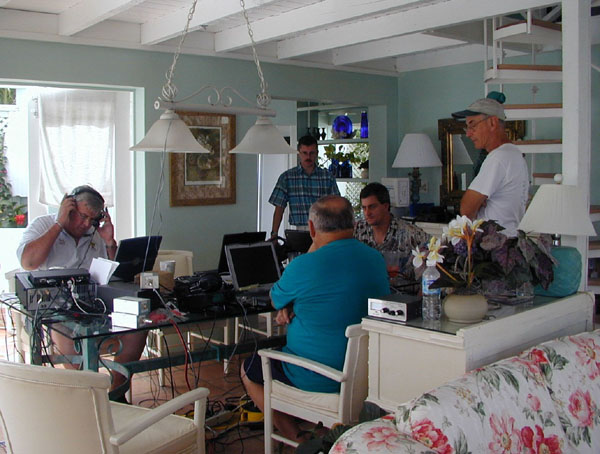
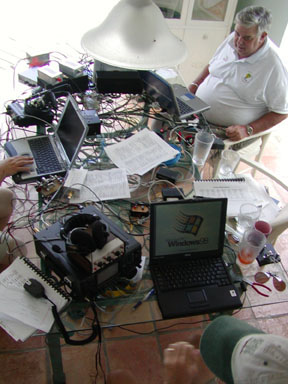 And then the gang moved inside to set up the transceivers and networked computers. Not difficult and the bugs were soon worked out.
This is what we had:
And then the gang moved inside to set up the transceivers and networked computers. Not difficult and the bugs were soon worked out.
This is what we had:
- ICOM IC 706
- ICOM IC 746
- ICOM IC 756 pro
- and a second ICOM IC 706 which was used for spotting.
Each station had a networked laptop, running Writelog
On to the contest
|

 Above - Ted W4ZE assembles the FORCE 12 beam while Paul NP2JF prepares the ladder.
Above - Ted W4ZE assembles the FORCE 12 beam while Paul NP2JF prepares the ladder.
 The 40 and 80 meter vertical was erected in the garden, in order to incorporate the 10 radials.
The 40 and 80 meter vertical was erected in the garden, in order to incorporate the 10 radials.  A SUPER beam, broadcasting on 10 and 15 meters was erected at the end of the porch.
A SUPER beam, broadcasting on 10 and 15 meters was erected at the end of the porch. 
 And now the fun begins!
And now the fun begins!  And then the gang moved inside to set up the transceivers and networked computers. Not difficult and the bugs were soon worked out.
This is what we had:
And then the gang moved inside to set up the transceivers and networked computers. Not difficult and the bugs were soon worked out.
This is what we had: